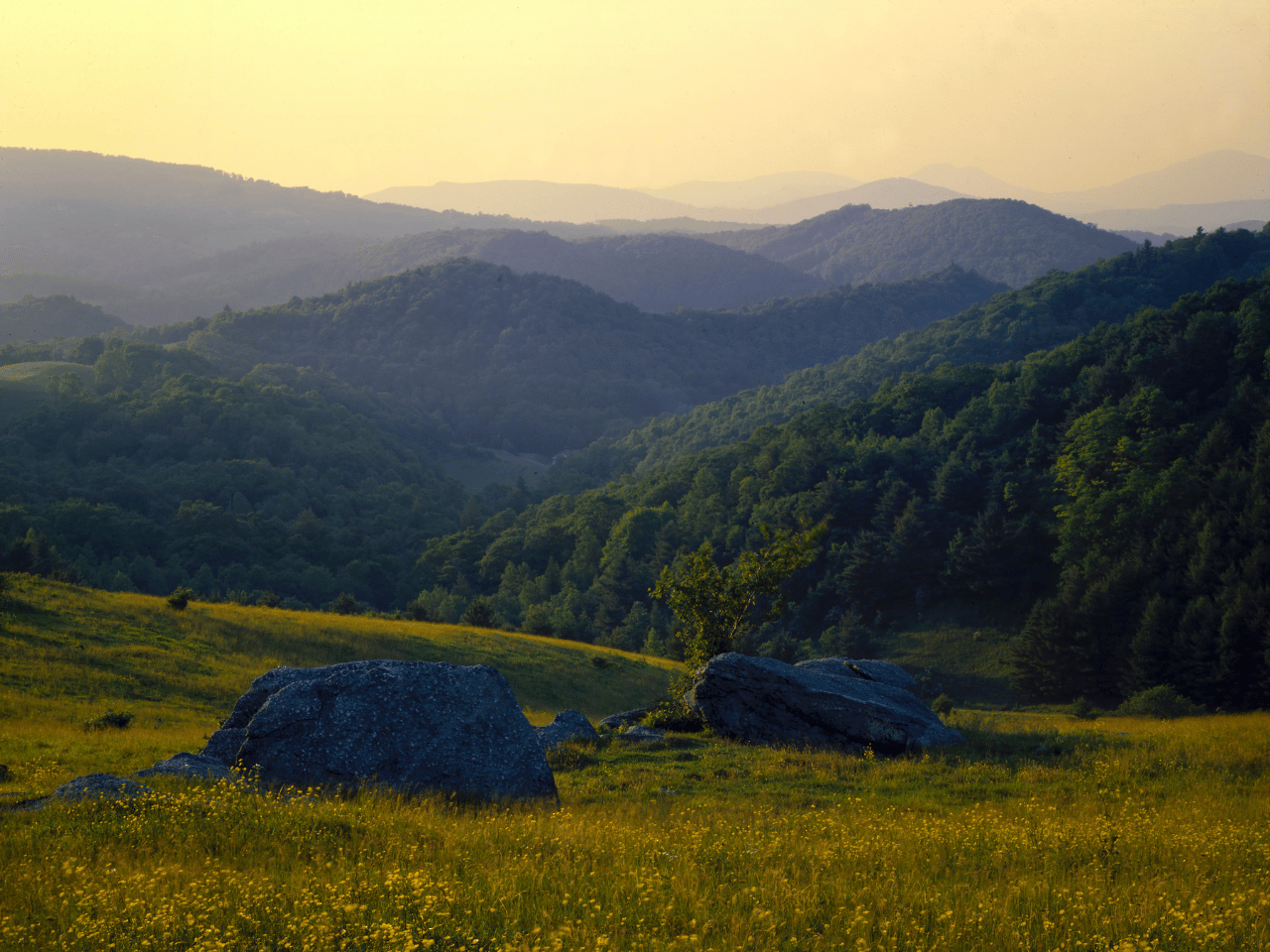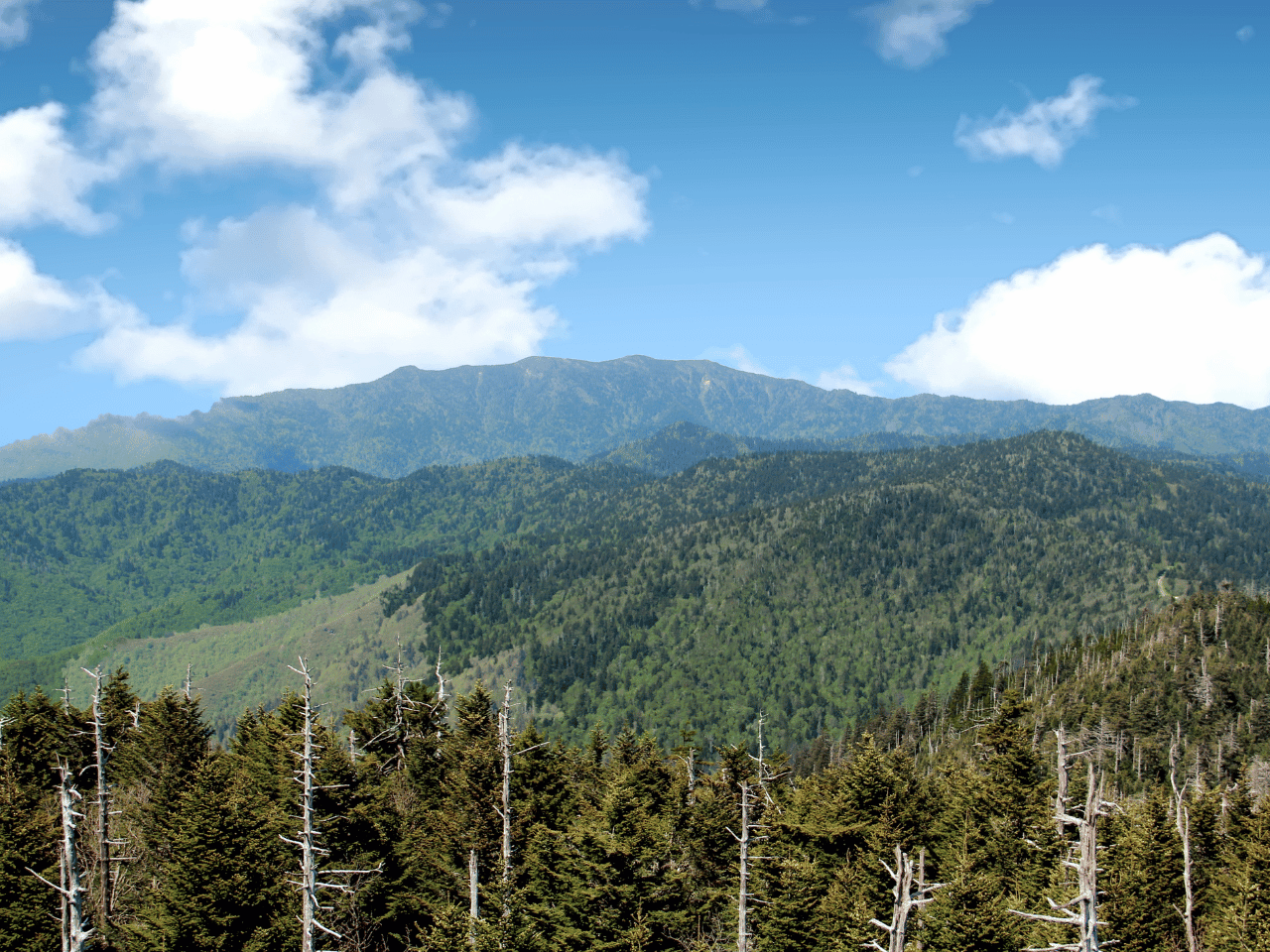Darjeeling
Darjeeling – The Enchanting Himalayan Gem
Darjeeling, often referred to as the “Queen of the Hills,” is a mesmerizing destination nestled in the Himalayan region of India At an altitude of about 2,000 meters (6,600 feet). Darjeeling is known for its scenic beauty, its world-famous tea plantations, and its colonial architecture.
Darjeeling‘s lush tea plantations, dating back to the British colonial era, produce some of the finest teas in the world. The rolling hills blanketed in emerald-green tea bushes create a picturesque landscape. Visitors can explore these tea estates and even witness the tea-making process.
Beyond its tea heritage, Darjeeling offers a vibrant mix of cultures, with influences from Nepali, Tibetan, and Bengali communities. The town’s lively markets, colorful festivals, and delicious cuisine reflect this multicultural tapestry.
Nature enthusiasts are drawn to Darjeeling for its pristine forests, trekking trails, and panoramic viewpoints, including the iconic Tiger Hill, where one can witness the sunrise over the Kanchenjunga, the third-highest peak in the world.
Best Time To Visit Darjeeling
Spring (March to April):
The weather is pleasant during these times, and the views of the mountains are clear.
Best time for clear views of the Himalayas: Spring brings pleasant weather, and the skies are usually clear, offering stunning views of the snow-capped peaks.
Weather: Daytime temperatures range from 10°C to 20°C, making it ideal for outdoor activities.
Autumn (September-October)
Witness the autumnal charm: This season brings beautiful foliage as the leaves change color, creating a picturesque landscape.
Weather: Crisp and cool with temperatures ranging from 10°C to 20°C during the day.
Winter (December to February):
Ideal for snow lovers: Winter attracts visitors who want to experience cold weather and possibly witness some snowfall.
Weather: Chilly with temperatures ranging from 2°C to 10°C during the day. Nighttime temperatures can drop significantly.
Culture and Cuisine of Darjeeling
Culture:
Darjeeling’s culture is a rich blend of diverse influences, including Tibetan, Nepali, Bhutanese, and British legacies. The people of Darjeeling, known as Darjeelingites, are known for their warm hospitality and deep-rooted traditions.
Art and Craft:
Explore the local markets and discover traditional crafts like thangka paintings, Tibetan rugs, and handmade wooden items. You can also visit the Tibetan Refugee Self Help Center to witness artisans at work.
Music and Dance:
Traditional music in Darjeeling is often accompanied by instruments like the flute and traditional Nepali drums. The region celebrates various cultural festivals with colorful dances, such as the popular Tamang Selo dance.
Festivals:
Darjeeling hosts a range of festivals that reflect its multicultural heritage. Dashain, Tihar, Losar, and Christmas are celebrated with great enthusiasm. Don’t miss the vibrant Buddhist festivals like Losar known as The Tibetan New Year and Buddha Jayanti.
Cuisine:
Darjeeling offers a diverse culinary landscape with influences from different communities. Some must-try dishes include momos (steamed dumplings), thukpa (noodle soup), and traditional Nepali thali. Don’t forget to savor a cup of Darjeeling tea, renowned for its unique flavor and aroma.
Top Destinations to Explore in Darjeeling
Tiger Hill:
This is one of the most famous sunrise points in Darjeeling. Visitors gather here early in the morning to witness the breathtaking sunrise over the Kanchenjunga mountain range. On a clear day, you can see Mount Everest in the distance.
Darjeeling Himalayan Railway (Toy Train):
A UNESCO World Heritage Site, this narrow-gauge railway is an engineering marvel. Taking a ride on the vintage toy train is a must-do experience as it offers scenic views of the hills and tea gardens.
Tea Gardens:
Darjeeling is renowned for its tea, and you can visit some of the tea estates to learn about the tea-making process. The Happy Valley Tea Estate is a popular choice, offering guided tours and tea tasting sessions.
Padmaja Naidu Himalayan Zoological Park: This high-altitude zoo is known for its conservation efforts and houses several endangered species, including the snow leopard, red panda, and Himalayan wolf.
Batasia Loop:
This engineering marvel is a spiral railway track that offers panoramic views of Darjeeling and the surrounding mountains. There’s also a Gorkha War Memorial here that is worth a visit.
Peace Pagoda:
This beautiful Japanese temple is a symbol of peace and tranquility. It offers a serene atmosphere and panoramic views of Darjeeling and the Himalayas.
Darjeeling Mall (Chowrasta):
The main town square is a bustling hub with shops, cafes, and street vendors. It’s a great place to take a leisurely stroll, shop for souvenirs, and enjoy some local snacks.
Himalayan Mountaineering Institute (HMI) and Darjeeling Zoo:
The HMI is a training center for mountaineers and offers a fascinating mountaineering museum. The adjacent Darjeeling Zoo is home to a variety of Himalayan wildlife.
Rock Garden and Ganga Maya Park:
These beautiful gardens are located about 10 kilometers from Darjeeling offer beautiful views, manicured lawns, and meandering pathways through a variety of flowering plants and a tranquil escape with waterfalls and boating options.
Tibetan Self-help Refugee Center:
Visit this center to learn about the Tibetan refugee community in Darjeeling and to buy Tibetan handicrafts and carpets. The center also houses a school and a craft workshop.
Observatory Hill and Mahakal Temple:
This hill offers panoramic views of Darjeeling town and the surrounding landscape. It’s also a sacred place for both Hindus and Buddhists and is home to the Mahakal Temple.
Bengal Natural History Museum:
If you’re interested in the flora and fauna of the region, this museum is a great place to explore. It features a collection of specimens of the region’s diverse wildlife.
Adventure Activities in Darjeeling
Trekking:
Darjeeling is a trekker’s paradise with numerous trekking trails of varying difficulty levels. Popular treks include the Sandakphu-Phalut Trek, Singalila Ridge Trek, and the Goechala Trek, which offer breathtaking views of the Himalayan peaks.
River Rafting:
The Teesta and Rangeet rivers near Darjeeling offer thrilling white-water rafting experiences. The river rapids vary in intensity, making it suitable for both beginners and experienced rafters.
Mountain Biking:
Explore the picturesque landscapes of Darjeeling on a mountain bike. There are several cycling routes that take you through tea plantations, forests, and villages. Bike rentals and guided tours are available.
Paragliding:
Experience the thrill of soaring through the air with paragliding in Darjeeling. Tandem paragliding flights are offered at various locations near Darjeeling, including Kalimpong and Lebong.
Rock Climbing:
The hilly terrain around Darjeeling provides opportunities for rock climbing. You can find climbing spots suitable for both beginners and experienced climbers.
Camping:
Camping in the serene Himalayan foothills can be a rejuvenating experience. There are several camping sites in and around Darjeeling, including spots near the Singalila National Park.
Yak Safaris:
Enjoy a unique adventure by taking a yak safari in the higher altitudes of Darjeeling. These gentle giants will take you on a scenic ride through the hills.
Bird Watching:
Darjeeling is home to a wide variety of bird species, making it a birdwatcher’s paradise. Singalila National Park and Senchal Wildlife Sanctuary are excellent places for birdwatching.
Fishing:
The rivers and streams in the region are well-suited for angling. You can try your hand at fishing for trout and other local species in the clear mountain waters.
Motorcycling:
If you’re an avid motorcyclist, you can explore the winding mountain roads on a motorcycle. Be sure to adhere to safety regulations and wear appropriate gear.
Jungle Safari:
Take a guided jungle safari in nearby national parks and wildlife sanctuaries like Jaldapara National Park or Mahananda Wildlife Sanctuary. You might spot elephants, leopards, and other wildlife.
Zip Lining:
Some adventure parks in the area offer zip-lining experiences, allowing you to glide through the forest canopy.
Hidden Places and Offbeat Experiences in Darjeeling
Chatakpur:
Situated in the Senchal Wildlife Sanctuary, Chatakpur is an eco-village that provides a unique opportunity to immerse yourself in nature. Surrounded by dense forests and offering panoramic views of the Himalayas, it’s an excellent place for birdwatching and experiencing rural life.
Bara Mangwa:
This serene village is known for its picturesque terraced orange orchards. You can take guided tours to learn about orange cultivation and even participate in fruit picking during the harvest season.
Gairethang:
A lesser-visited gem, Gairethang offers a peaceful atmosphere and an opportunity to witness the daily life of the locals. You can explore the village, interact with the friendly residents, and enjoy the tranquility of the region.
Jhandi:
Nestled amidst pine forests, Jhandi is a hidden treasure known for its stunning sunrise and sunset views. The nearby forest trails offer fantastic opportunities for hiking and birdwatching.
Chibo:
For those seeking solitude, Chibo is an isolated village with a few guesthouses. It offers a chance to disconnect from the hustle and bustle of city life and reconnect with nature.
Dhotrey:
Located near the Singalila National Park, Dhotrey is a peaceful hamlet that serves as a starting point for treks. It offers breathtaking views of Kanchenjunga and the surrounding hills.
Nature and Wildlife in Darjeeling
Bengal Safari Park: Located in Siliguri, not far from Darjeeling, this safari park allows you to get up close with various animals, including Bengal tigers, leopards, and Asiatic black bears. It’s a great family-friendly attraction.
Chapramari Wildlife Sanctuary:
Situated on the banks of the Murti River, this sanctuary is home to diverse wildlife, including elephants, leopards, and various bird species. Jeep safaris are available for wildlife enthusiasts.
Samsing:
Known for its lush tea gardens and tranquil forests, Samsing is an excellent destination for nature lovers. You can explore the nearby Samsing Forest Reserve and visit the quaint Suntalekhola village.
Bijanbari:
A picturesque village with stunning views of the Himalayas, Bijanbari offers trekking opportunities in the nearby Senchal Wildlife Sanctuary. The village is known for its serene ambiance and scenic landscapes.
Todey:
This remote village near Darjeeling offers a pristine environment and is a great place for birdwatching. It’s known for its biodiversity and serene landscapes.
Important Tips for Travelers While Traveling in Darjeeling
Local Festivals:
If possible, plan your visit to coincide with local festivals. Attending festivals like Losar (Tibetan New Year) or Dashain (Nepali festival) can provide unique cultural experiences.
Medical Kit:
Carry a basic medical kit with essentials like pain relievers, band-aids, and any personal medications you may need, as some remote areas may have limited medical facilities.
Local Transportation:
Explore the town on foot or hire a local taxi for short trips. Negotiate fares in advance or ask your hotel for recommendations on trustworthy drivers.
Local Cuisine:
Don’t hesitate to try local delicacies at small eateries. Darjeeling is known for its momos, thukpa, and delicious street food. Be cautious about hygiene but enjoy the flavors.
Interact with Locals:
Engage with the local community, be open to learning about their traditions, and consider participating in cultural activities if invited.
Monastery Etiquette:
When visiting monasteries, adhere to their guidelines. Dress modestly, remove your shoes before entering, and maintain a respectful and quiet demeanor.
Acclimatization:
If you plan to trek or visit higher altitudes, acclimatize yourself gradually to prevent altitude sickness. Listen to your body and take necessary precautions.
Explore Beyond Darjeeling:
Consider extending your trip to nearby destinations like Kalimpong, Kurseong, or the Sikkim region to further explore the Himalayan beauty and culture.
Travel Insurance:
It’s advisable to have comprehensive travel insurance that covers medical emergencies, trip cancellations, and other unforeseen circumstances.
Photography Gear:
If you’re a photography enthusiast, bring the necessary gear to capture the stunning landscapes, wildlife, and cultural moments you’ll encounter on your journey.
Travel Responsibly:
Respect the environment by not littering, conserving water, and supporting eco-friendly practices. Leave no trace of your presence in natural areas.
Language Skills:
While English and Hindi are commonly spoken, learning a few phrases in Nepali, Tibetan, or Bengali can enhance your travel experience and facilitate communication with locals.
Stay Updated:
Keep informed about local news and weather conditions, especially if you plan to visit remote areas or trekking routes.
Cultural Sensitivity:
Be sensitive to the cultural and religious practices of the local communities. Seek permission before taking photographs of people and their homes.
Plan Ahead:
Research and plan your itinerary in advance to make the most of your Darjeeling experience. Consult travel forums, blogs, and guidebooks for insights and recommendations.
By exploring the hidden gems of Darjeeling, you’ll not only have a memorable journey but also contribute to the preservation of its natural beauty and cultural heritage. Darjeeling’s enchanting landscapes and warm hospitality await, promising a truly immersive Himalayan adventure.
Get Your Best Tour Experience
Customer Speak
Best Seller Package in Darjeeling Package
- 7N/8D
Cheapest Darjeeling Tour Package for Honeymoon
(456)
- 3N/4D
Best Budget Sikkim Honeymoon Packages for Darjeeling from Delhi
(657)
Things To Do In Darjeeling
Explore More About Darjeeling
By Air: The nearest airport to Darjeeling is Bagdogra Airport (IXB), which is approximately 40 kilometers away. From the airport, you can hire a taxi or take a shared cab to reach Darjeeling.
By Train: The nearest major railway station to Darjeeling is New Jalpaiguri Railway Station (NJP) in Siliguri, which is well-connected to major cities in India. From NJP, you can hire a taxi or take a shared cab to reach Darjeeling.
By Road:
- From Bagdogra (Airport): Taxis and cabs are readily available at Bagdogra Airport. You can also book a pre-paid taxi or opt for shared cabs.
- From New Jalpaiguri (NJP): Taxis and shared cabs are available at NJP for the journey to Darjeeling.
- Self-Drive: You can rent a car and drive to Darjeeling from nearby cities. The roads are generally well-maintained.
By Bus:
- Public Buses: Regular state-run and private buses operate from Siliguri (close to NJP and Bagdogra) to Darjeeling. The journey takes around 4-5 hours.
- Private Taxis and Cabs: You can hire a private taxi or cab to travel from Siliguri to Darjeeling.
By Toy Train: The Darjeeling Himalayan Railway, also known as the Toy Train, is a UNESCO World Heritage Site and a popular way to reach Darjeeling. It starts from Siliguri and takes a scenic route up to Darjeeling. The toy train ride is a unique and memorable experience.
By Helicopter: There are helicopter services available from Bagdogra to Darjeeling, providing a quicker and more scenic mode of transport.
Darjeeling is a year-round destination, but the best times to visit are:
Spring (March to May):
Weather:
Spring brings pleasant weather with temperatures ranging from 10°C to 20°C during the day. The tea gardens are lush and in full bloom, creating a vibrant landscape.
Autumn (October to November):
Weather:
Autumn offers clear skies and comfortable temperatures between 10°C to 20°C during the day. This season provides excellent visibility for enjoying panoramic views of the Himalayas.
You just need to choose your Package and come to Bagdogra rest will be handled by Etripto.in.
If you are coming through Train then you need to reach NJP (New Jalpaiguri Railway Station).If you are coming through flight then you can come to Bagdogra Airport.
You want to visit then September to June will be the proper time to visit Darjeeling.If you want to avoid high cost then don’t come in holiday dates.
You can explore Darjeeling Zoo, Ropeway,Tea Garden,Himalayan Mountaineer Institute and Tigerhills.
To visit Darjeeling 4 Days 3 Nights is the best plan in which you can explore Zoo,Tea Garden,Mountaineer Institute, Lamahata and Tinchuly.
Darjeeling is 85 Km away from Njp and it takes 6 hours to reach Darjeeling.
In Darjeeling you wont get snow rather you can get snow in Sikkim.
- Darjeeling is known as the “Champagne of Teas” due to its unique and exquisite flavor profile.
- The Darjeeling Himalayan Railway, also known as the “Toy Train,” is a UNESCO World Heritage Site and one of the oldest functioning steam engines in the world.
- Darjeeling is home to the highest tea estate in the world, the Thurbo Tea Estate, situated at an elevation of about 6,800 feet.
- The region’s climate and altitude contribute to the distinctive taste and aroma of Darjeeling tea, which is prized by tea connoisseurs globally.
- Darjeeling has breathtaking vistas of the snow-capped Himalayas, making it a popular destination for tourists and trekkers.
- The Darjeeling Peace Pagoda, built by Japanese monks, is one of the 30 Peace Pagodas around the world and offers panoramic views of the surrounding area.
- The Padmaja Naidu Himalayan Zoological Park in Darjeeling is dedicated to the conservation of endangered Himalayan species like the red panda and snow leopard.
- Darjeeling’s diverse cultural heritage is reflected in its population, which includes a blend of Nepali, Tibetan, Bhutia, and Bengali communities.
- The Darjeeling Ropeway, one of the oldest cable cars in India, provides stunning aerial views of the valley and the Himalayan peaks.
- Tenzing Norgay, one of the first two men to reach Mount Everest’s summit in 1953, was born and raised in Darjeeling.





